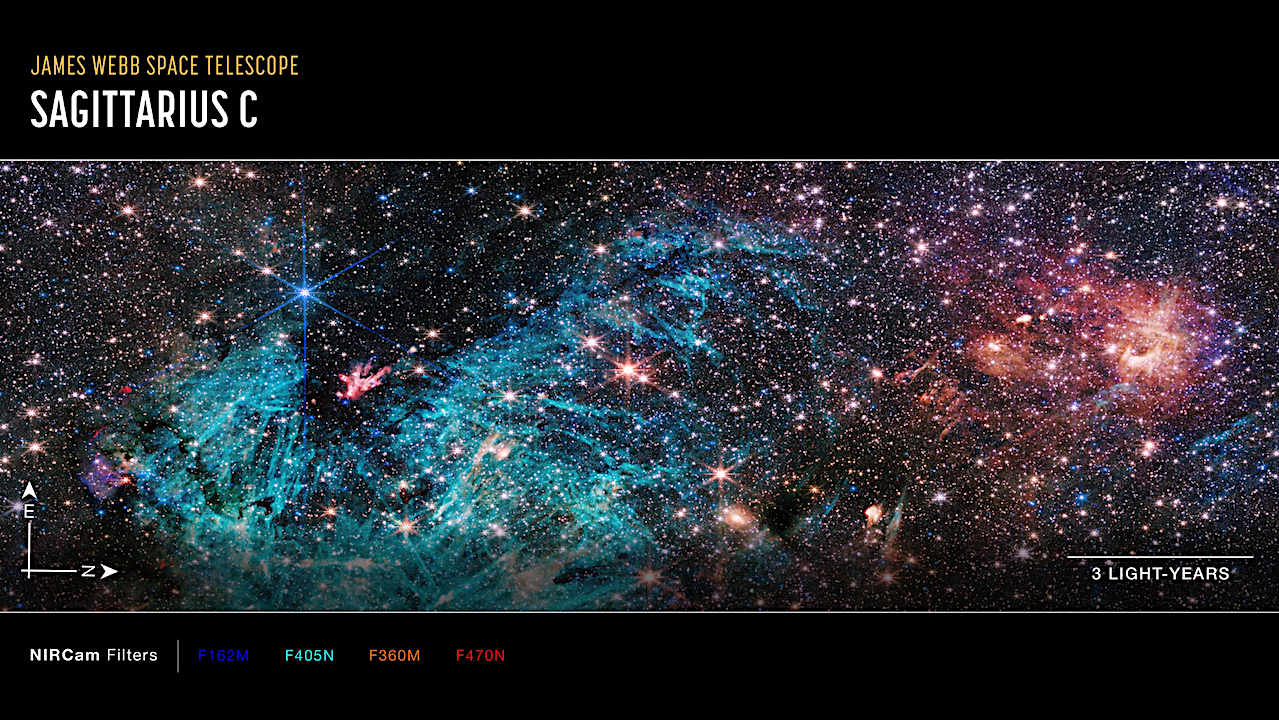-
Astronomers discover the Milky Way’s faintest satellite
<div data-thumb="https://scx1.b-cdn.net/csz/news/tmb/2023/astronomers-discover-t-2.jpg" data-src="https://scx2.b-cdn.net/gfx/news/2023/astronomers-discover-t-2.jpg" data-sub-html="Detection plot for Ursa Major III/UNIONS 1. Tangent plane-projected sky positions of all stars within a 12′ × 12′ region around the overdensity. Credit: arXiv (2023). DOI: 10.48550/arxiv.2311.10147″> Detection plot for Ursa Major III/UNIONS 1. Tangent plane-projected sky positions of all stars within a 12′ × 12′ region around the overdensity. Credit:…
-
JWST uncovers a surprising amount of nickel in adolescent galaxies
Light from 23 distant galaxies, identified with red rectangles in the Hubble Space Telescope image at the top, were combined to capture incredibly faint emission from eight different elements, which are labelled in the JWST spectrum at the bottom. Although scientists regularly find these elements on Earth, astronomers rarely, if ever, observe many of them…
-
Groundbreaking method to match celestial objects across telescopes
By Salena Fitzgerald / Published Nov 27, 2023 A team of Johns Hopkins researchers has developed a cutting-edge data science approach capable of matching observations of celestial objects taken across multiple telescope surveys, overcoming a significant challenge in modern astronomy. This new tool has the potential to enhance the accuracy and reliability of astronomical catalogs,…
-
Amateur Astrophotographer Discovers New “Phantom Stinger” In Scorpio Constellation’s Tail
An astrophotographer has found a patch of oxygen he’s named the Phantom Stinger Nebula, which appears to have been overlooked by generations of astronomers, amateur and professional alike. The discovery is part of a project by amateurs to explore the sky at a wavelength professional observatories are arguably neglecting – the 495.9-500.7 nanometer band where…
-
‘Any plans for a manned space program?’
Moon Hong-kyu The author is the head of the Exploration Science Project Group at the Korea Astronomy and Space Science Institute.Last month, I attended the International Astronautical Congress (IAC) in Baku, the capital city of Azerbaijan. The IAC is an annual gathering of space experts from around the world, often attracting as many as 9,000…
-
What is the biggest planet ever found?
The universe is vast — possibly even infinite — and in the scheme of things, our planet is tiny. Even in our own solar system, Earth is dwarfed by gas giants like Jupiter. But are there bigger planets out there? How much bigger? What is the biggest planet we know of? The answer depends on…
-
What is the biggest planet ever found?
The universe is vast — possibly even infinite — and in the scheme of things, our planet is tiny. Even in our own solar system, Earth is dwarfed by gas giants like Jupiter. But are there bigger planets out there? How much bigger? What is the biggest planet we know of? The answer depends on…
-
Eugene Astronomical Society lets the public use special telescopes to look at sun
Members of the society presented their personal solar telescopes in the hopes of spreading awareness of their group EUGENE, Ore. — The Eugene Astronomical Society came out to Alton Baker Park Sunday afternoon for their occasional solar viewing exhibition, using their special telescopes to get a view of the sun while letting the public see…
-
Eugene Astronomical Society lets the public use special telescopes to look at sun
Members of the society presented their personal solar telescopes in the hopes of spreading awareness of their group EUGENE, Ore. — The Eugene Astronomical Society came out to Alton Baker Park Sunday afternoon for their occasional solar viewing exhibition, using their special telescopes to get a view of the sun while letting the public see…
-
Webb’s View Of The Galactic Center. 500,000+ Stars. How Many Have Life-bearing Worlds?

The NIRCam (Near-Infrared Camera) instrument on NASA’s James Webb Space Telescope’s reveals a portion of the Milky Way’s dense core in a new light. An estimated 500,000 stars shine in this image of the Sagittarius C (Sgr C) region, along with some as-yet unidentified features. A large region of ionized hydrogen, shown in cyan, contains…